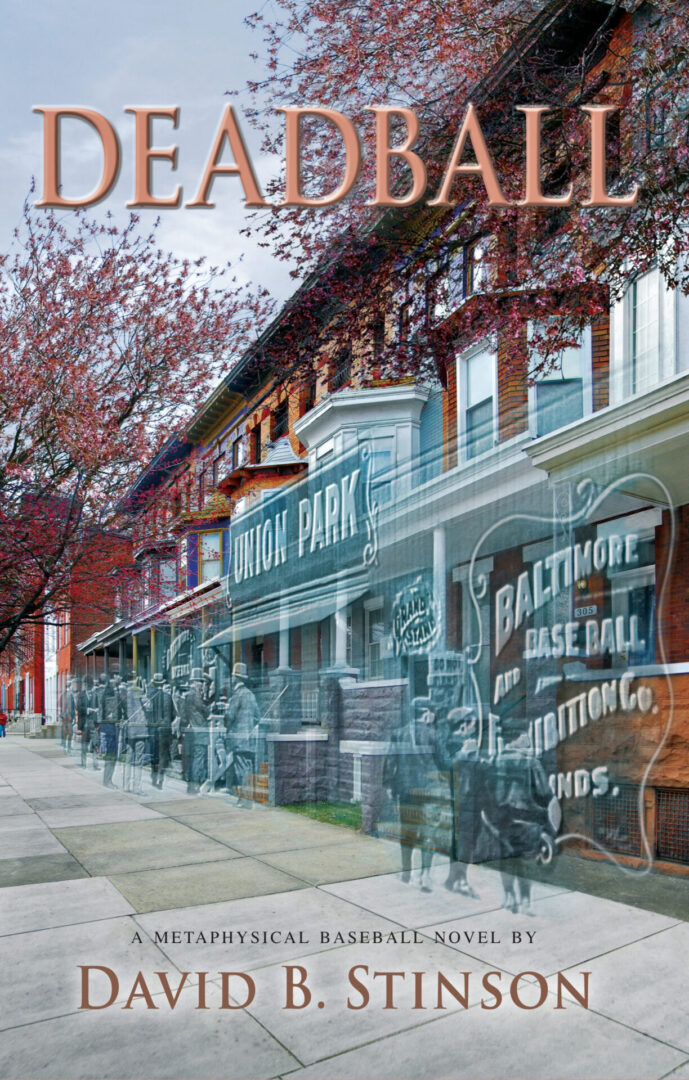Bugle Field was located in East Baltimore at the intersection of Federal Street and Edison Highway, just a few blocks south of Baltimore Cemetery and approximately one and a half miles off I-895.
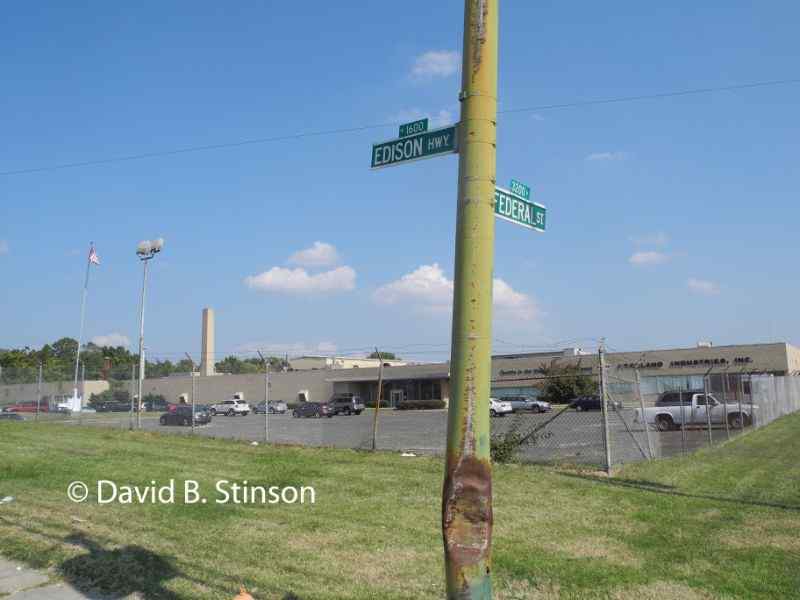
In 1912, Edward C. Lastner of the Simpson and Doeller Company (a company that printed can labels), with seed money provided by his employer, leased a cow pasture from Mrs. Carrie Snyder at what is now Edison Highway and Federal Street and constructed the ballpark. From 1912 to 1917, the ballpark, known as “Label Men’s Oval,” was home to a semi pro club known as the Label Men.
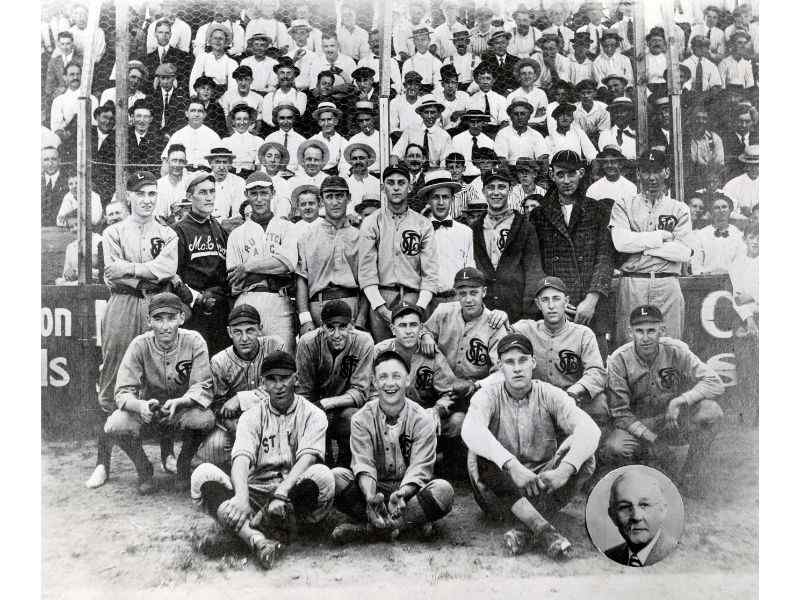
About 1924, the ballpark was purchased by Joe Cambria, a scout for the Washington Senators. Cambria christened his ballpark Bugle Field, after the Bugle Coat and Apron Supply Company, a company he owned. In addition to football, boxing, and wrestling matches, Cambria brought baseball teams he owned to Bugle Field, including the Bugle Coat and Apron Nine, at first a member of the Baltimore Amateur League and later a semipro team, and the Hagerstown Hubs (exhibition games), a minor league team that played in the Class D Blue Ridge League (see Brian McKenna’s SABR Biography of Cambria for additional information).
According to newspaper accounts of the Baltimore Sun and the Baltimore Afro-American, the Black Sox first began playing games at Bugle Field in 1930. On September 2, 1930, the first night game was played at Bugle Field, a contest between the Black Sox and the Bugles. In 1932, Cambria purchased an interest in the Black Sox and became their general manager. Cambria made Bugle Field the Black Sox’s home field starting in 1932 (that year the Black Sox were members of the East-West League). Previously, the Black Sox had played their home games at Westport Park and Maryland Baseball Park.The Black Sox played at Bugle Field in 1933 as well, as members of the Negro National League. By 1934, the Black Sox were playing under new ownership and the team disbanded later that same year.
In 1938 a new negro league team arrived in Baltimore, making Bugle Field their home park. The Baltimore Elite Giants (pronounced EE-lite) originated in 1918 in Nashville, Tennessee. They played their home games in Nashville through the 1935 season. The Elite Giants then moved to Columbus, Ohio, in 1937, and Washington, D.C. , in 1937.
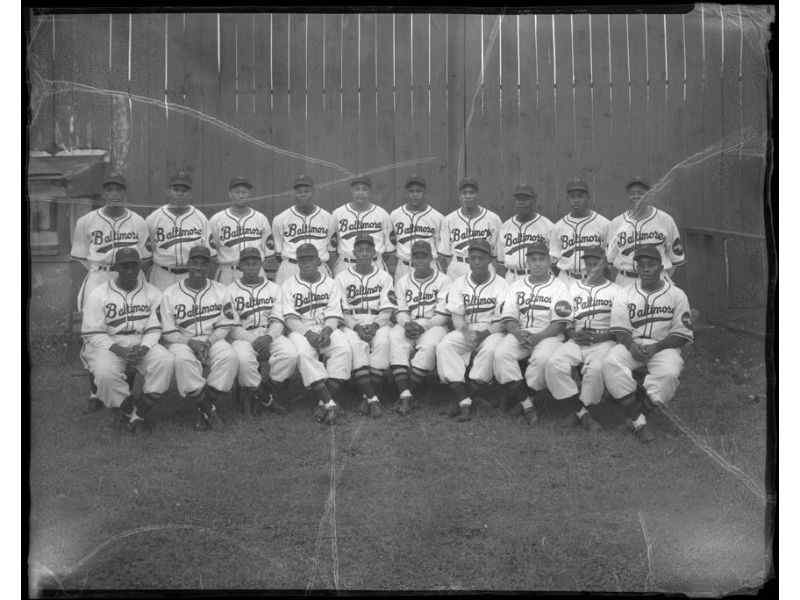
According to hendersonphotos.wordpress.com, the Elite Giant players in the above picture are:
Top row, left: Joe Black; Leroy Ferrell; Charles (Specs) Davidson; Lenny Pearson; Al Wilmore; Bob Romby; Johnny Hayes; Jim Gilliam; Jesse (Hoss) Walker;
Bottom row: Butch Davis; Silvester Rodgers; Henry Kimbro; Vic Harris; Henry Bayliss; Henry (Frazier) Robinson; Frank Russell; Tom (Pee Wee) Butts; Leon Day.
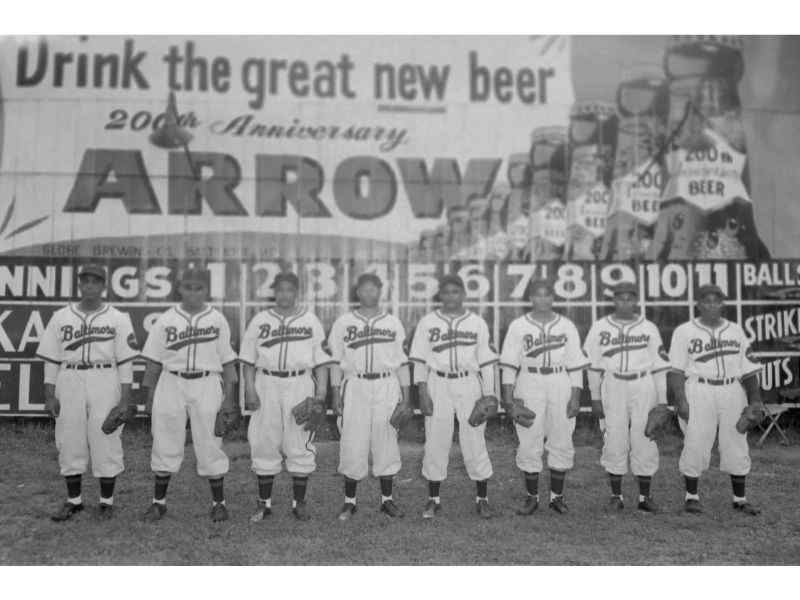
The Elite Giants played in the Negro National League from the time of their arrival in Baltimore in 1938, through the 1948 season. In 1949 the played in the Negro American League. The team brought Baltimore two league titles, the Negro National League championship in 1939, and the Negro American League championship in 1949.
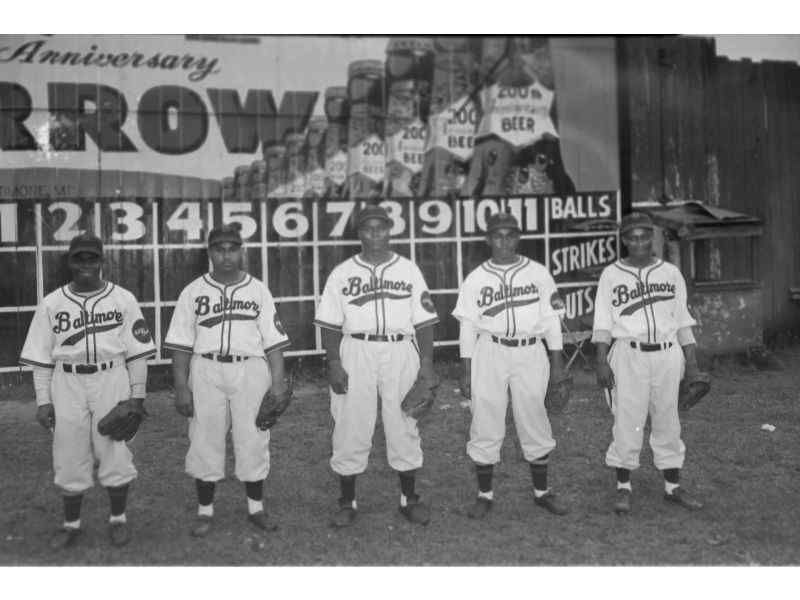
Elite Giant players of note include Hall of Famers Roy Campanella and Leon Day, Joe Black (1952 NL ROY), Junior Gilliam (1953 NL ROY), Lester Locket, and Bill Wright.
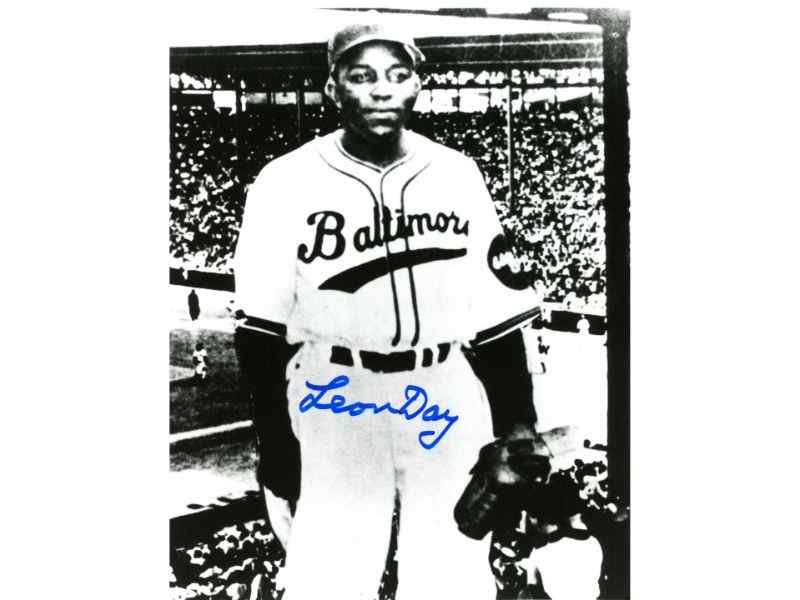
The first two games of the 1949 Negro American League Championships were played at Bugle Field. After the Elite Giants went on the road to play the remaining games, the owners of the property began demolition of the ballpark in preparation for sale of the land. From newspaper accounts, it appears that the last sporting events held in Bugle Field were a exhibition by Daredevil Don Robey (automobile demolition) on September 30, 1949, and a Baltimore Soccer Club match on December 28, 1949.

A classified ad that ran in the Baltimore Sun on September 30 and October 1, 1949, announced the quick demise of Bugle Field:
“WRECKING BALL PARK – Used 2×4 to 8×8, 10, 60 foot Creosoted poles,
plus other lumber. Apply Bugle Field. See Mr. Reinhold PE 0371″
As shown in the Sanborn Map below, Bugle Field’s grandstand sat near the intersection of Federal Street and Edison Highway.
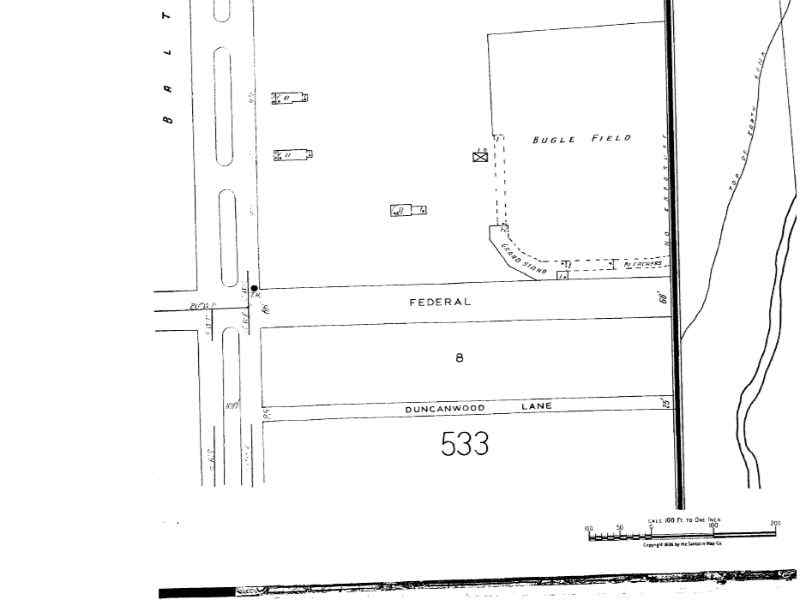
The 1937 aerial view (thanks to Bernard McKenna) shows Bugle Field and its irregularly shaped outfield fence.
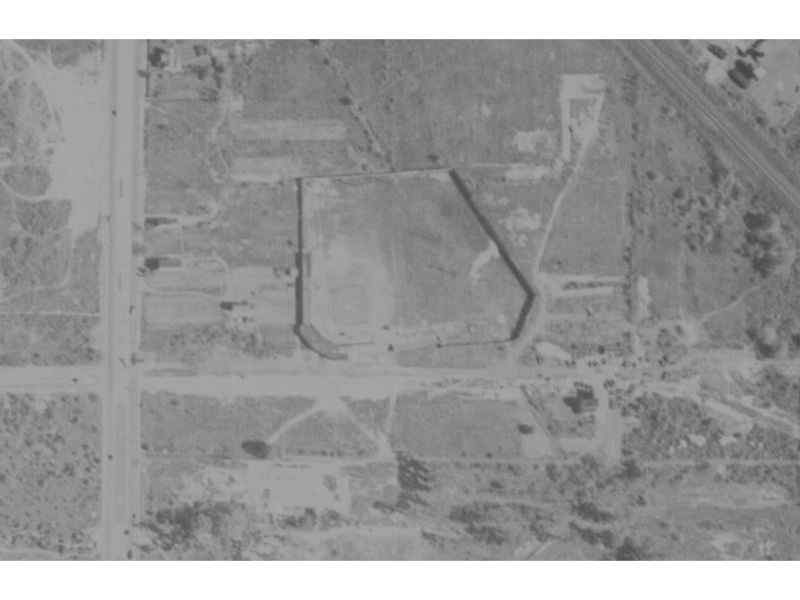
The southwest corner of the Rockland Industries Building near the intersection of Federal Street and Edison Highway sits in the footprint of the original grandstand.
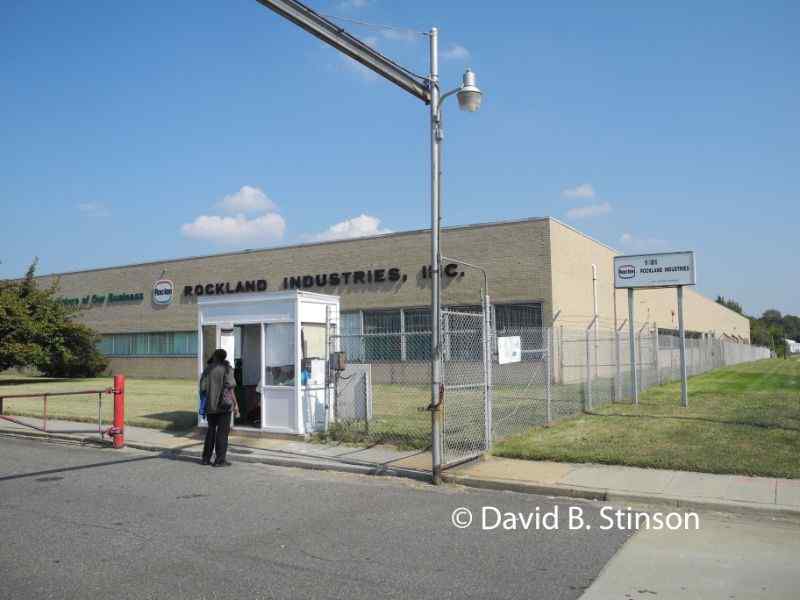
The asphalt parking lot in front of Rockland Industries was once the gravel parking lot for Bugle Field.
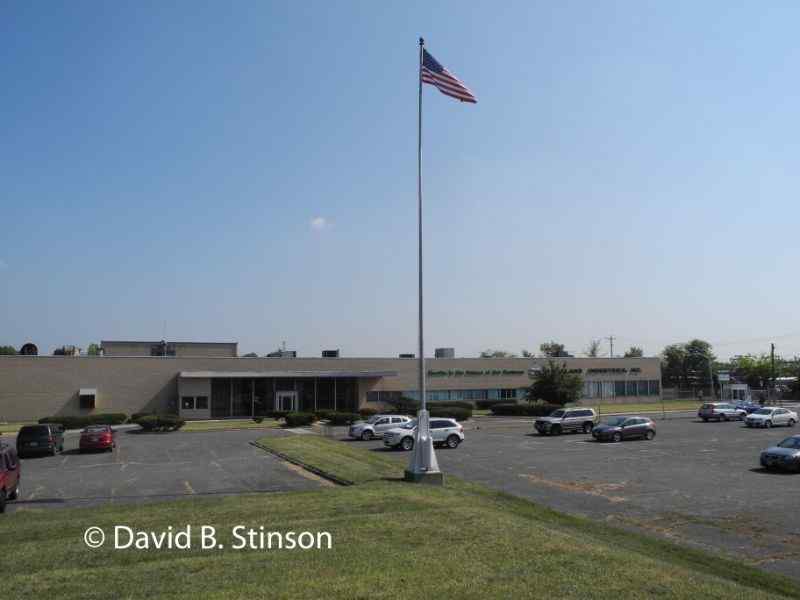
The first base line to the right field corner ran parallel to Edison Highway.
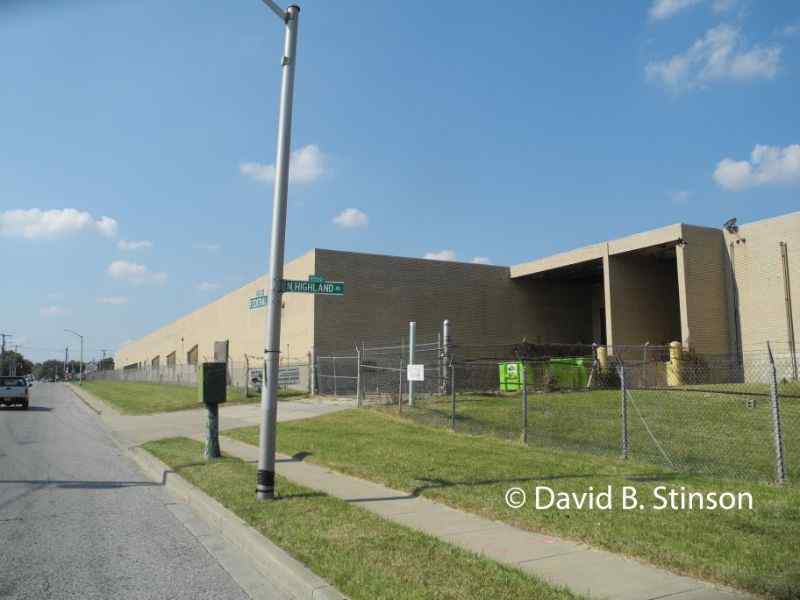
Some references to Bugle Field identify its location as being the Intersection of Edison Highway and Biddle Street. However, Biddle Street, which runs parallel to Federal Street, sits four blocks south of the ballpark site. Beyond what was once right and center field is a line of trees that most likely mark the outer limits of the ballpark site.
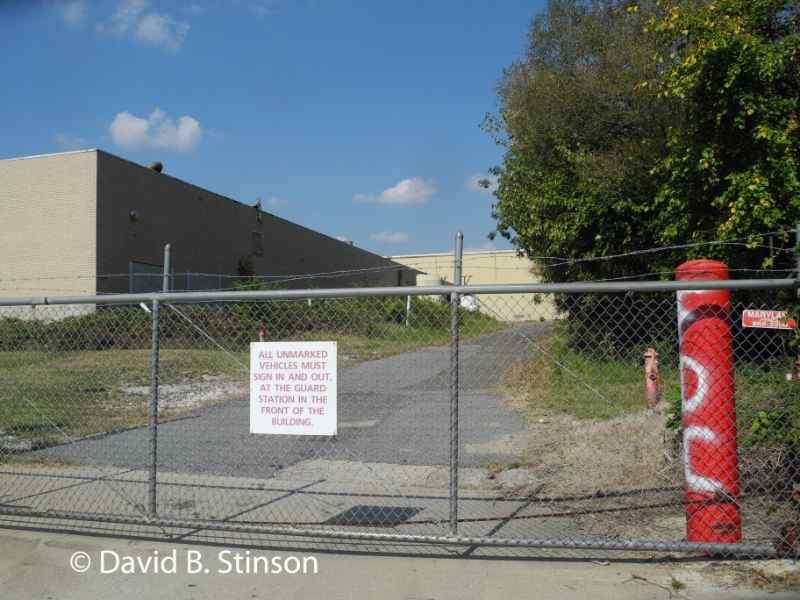
The Sports Legends Museum, located next to Orioles Park at Camden Yards, includes a tribute to the Elite Giants, including a mock up of a bus similar to the type that Negro League players once road.
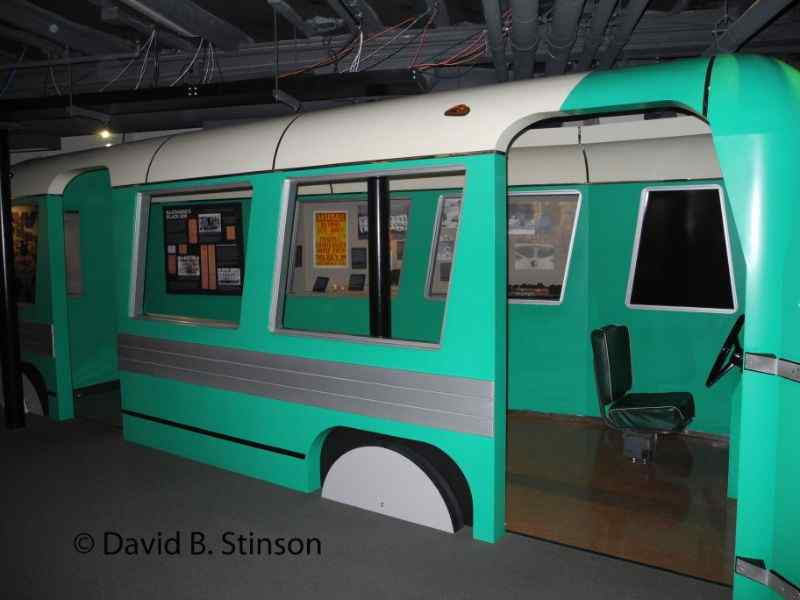
In 1950, the Elite Giants moved their home games to Westport Stadium, which was located on Annapolis Road between the Baltimore-Washington Parkway and Patapsco Avenue. This should not be confused with Westport Park, which was located on Russell Street, and is where the Baltimore Black Sox played their home games from 1917 to 1920.
Bugle Field has been gone for more than half a century. No portion of the old ballpark remains at the site, nor does it appear that there are any buildings surrounding the site that date back to the days of Bugle Field. Even without any tangible ties to the old ballpark, its former site certainly is deserving of at least a Maryland historical marker noting the significance the area once had to Baltimore history and the history of baseball in the United States.
